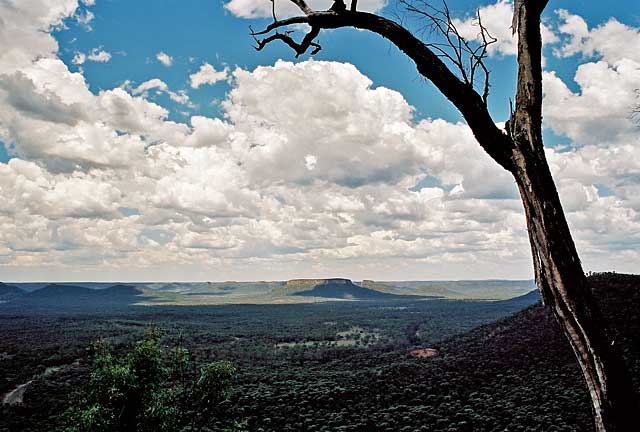
Depart Brisbane for Toowoomba with morning tea at Dalby. 4WD into the "Brigalow Belt", through Chinchilla, with lunch at Roma or Injune. Drive onto Takarrakka camping reserve at Carnarvon National Park. Sunset at Platypus Pools.
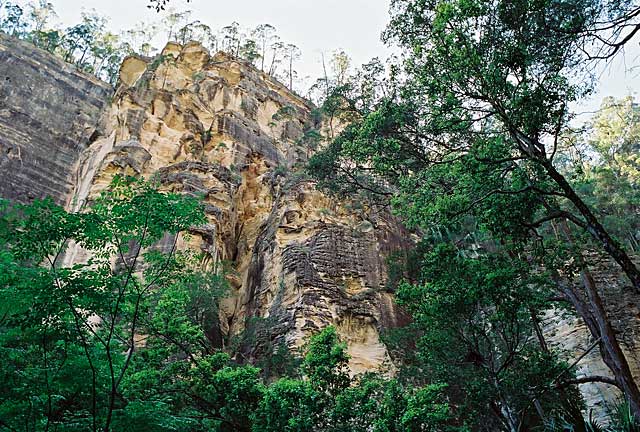
This gorge is at 3km from the camping area. It is long and sinuous, and changes in detail from flood to flood.
This is at 3.2km from the camping area. After the first creek crossing, this track is to the right, off the main gorge track. The bluff is 200 metres above the gorge floor, so a series of stone steps and ladders have been built into the track to make the steep climb easier. Boolimba Bluff offers a panoramic view of the gorge and the geological components of the area can be identified.
This feature, at 3.6km from the camping area, is situated in Violet Gorge, a side gorge in the Hellhole Gorge complex. A small waterfall tumbles over a large rock overhang into an icy pool. The rock walls are dripping with water and support a profilic growth of ferns, mosses, liverworts and homworts. These small delicate plants fall easily.
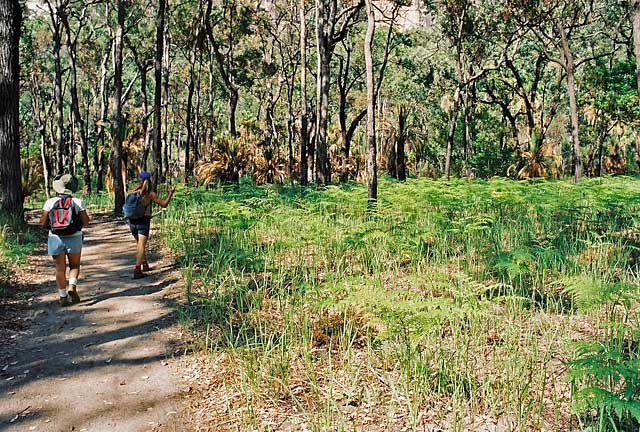
A climb up a steel ladder and through a narrow rock crevice leads to a large chasm carved out by water, 4.1km from the camping area. Ferns and mosses grow on the walls and floor. The still, eerie atmosphere here leaves many people quiet and full of wonder.
A short steep climb leads past Lower Aijon Falls to the small but beautiful Ward's Canyon, 4.8km from the camping area. Among the flourishing growth of mosses and ferns in this canyon is the kind fern. At the end of the canyon is a shaded pool fed by Upper Aijon Falls.
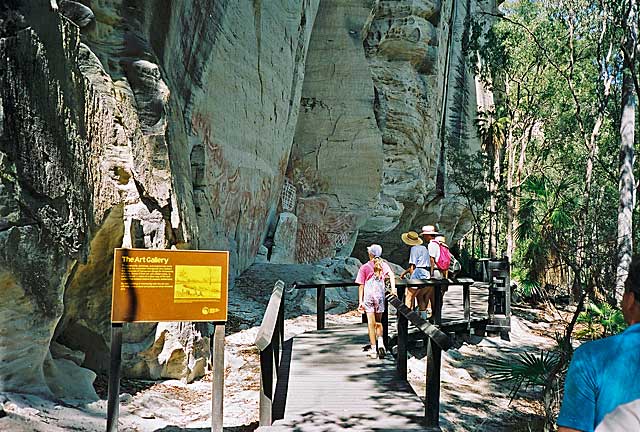
This is a major Aboriginal site at 5.6km from the camping area. The rock surface on which these paintings are inscribed, erodes easily: so please look and don't touch! The artists are gone and it would be a further tradgedy to lose the heritage they left. By keeping on the boardwalk at this site, you will see the art to the best possible advantage.
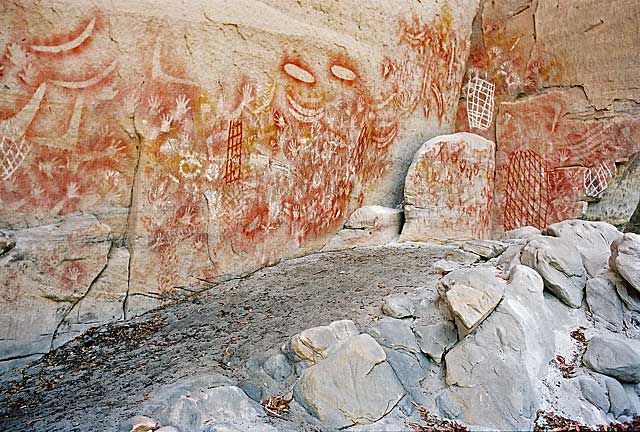
Although Carnavon Gorge was offically discovered by Europeans in 1857, Aborigines have lived near the gorge for at least 20,000 years. Fine examples of complex 'stencil' rock art and engravings reflect the ancient social and material culture of these people. Sunrover Expeditions' experienced guide will lead you to several of these 'sites' during your stay in Carnarvon Gorge, giving you an insite into Aboriginal culture and the art.
In the shelter of this large overhang, 9.3km along the main gorge track, Aborigines once spent time feasting and painting. The lower walls are covered in carving and paintings. Do not expect to see everything at a glance. Look carefully at the paintings and many exciting figures will take shape. There are no constructed walking tracks beyond Cathedral Cave, but Boowinds Gorge nearby to the left with it's narrow passages and sculptured rock walls is worth seeing.
Early morning and late afternoon are the best times to stroll quietly along the nature trail, a short track starting on the northern side of the creek at "number 1 crossing".
The walking track starts at the southern end of the road, 1.5km from the camping area. An easy walk of a few hours will enable you to explore the creek and its gorges. In places, these gorges are so narrow that the sides can be touched with outstretched arms.
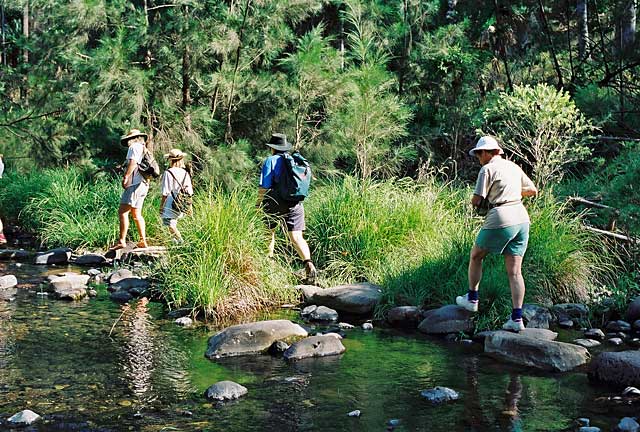
The 500 metre track to the Aboriginal art site at Baloon Cave has been developed as a signed trail about Aboriginal culture and use of plants. It is an easy walk starting on the southern side of the road, 2km from the camping area.
A pleasant, easy walk of 2km downstream from the camping area leads to this large nature pool in Carnarvon Creek. The track continues 1km to meet the road.
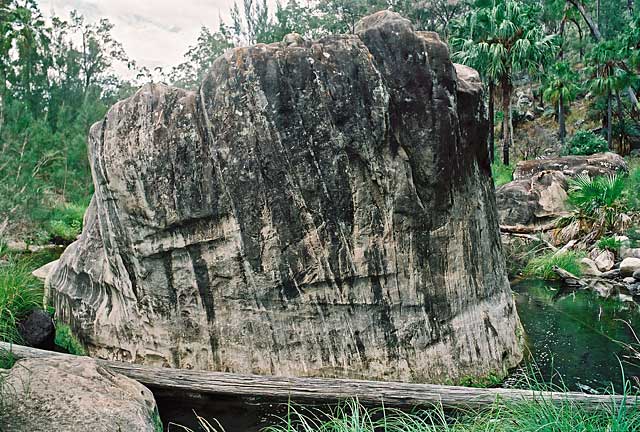
Walk carefully and thoughtfully through this beautiful gorge at 7.2km from the track start.
A series of steep, rough climbs starting from Boowinda Gorge leads to Battleship Spur. From the top, there is an excellent view of Carnarvon Gorge. This hike is not part of the walking track system, and it is not signposted, and recommended only for the physically fit.
Return to Brisbane via Lonesome National Park.